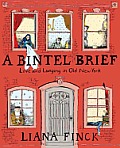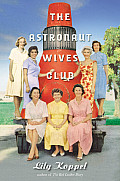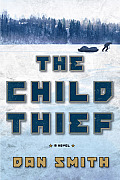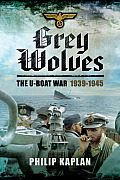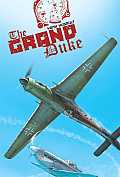Link to this review in the form of a comic strip by billba tagged biography

Click for the full-sized comic
@bookblurb Robert A. Heinlein’s science fiction is rooted deeply in his complex and fascinating life.
Link to this review by davidtomashek tagged history • graphic novel
A hundred years ago the advice column “A Bintel Brief” ran in the Yiddish newspaper The Forward. The letters mostly came from new immigrants, and often addressed the friction between the culture of the old country and life in New York. Cartoonist Liana Finck puts these letters into pictures and gives them new life. One writer is haunted by “the betrayed shtetl ghosts that follow me around.” Another questions her love for her fiancé, a brilliant man and a recent immigrant who embarrasses her in front of her American friends.
Why I picked it up: It was a combination of the subtitle and the art of the front cover which shows a brownstone with five windows, each containing an isolated individual living in a world of private anguish.
Why I finished it: The book brilliantly illustrates how people interact with their pasts. To show how letters from another century still touch people today, Finck presents a literal dialogue with the past. The ghost of The Forward’s editor springs from a notebook of clippings and, in interludes between letters, he converses with her as they walk the streets of present-day New York. She finds the letters as heartbreaking as he finds the modern world fascinating.
Readalikes: Submissions from those longing to be heard made me think of They Call Me Naughty Lola, a book of personal ads from the London Review of Books. Rereading it was a light-hearted antidote to the sadness of A Bintel Brief.
@bookblurb Comic adaptations of a Yiddish newspaper’s advice column from about 100 years ago.
Link to this review by darcy tagged biography
Daredevil Robert Craig “Evel” Knievel grew up in the mining town of Butte, Montana. He lived mostly with his grandmother after his mom abandoned him, and as a young man he started to work in the copper mines. He is best known for his motorcycle stunts and spectacular crashes, but on his way to becoming the world’s top daredevil he sold insurance, broke into safes, and then started a security company for businesses who had their safes broken into. He did a lot of things, mostly shady, before he settled on risky stunts to please crowds.
Why I picked it up: I’ve always had a sick fascination with daredevils like Knievel, and wondered what happened to him in his early life to make him attempt such outrageous stunts.
Why I finished it: There was a lot more to Knievel than jumping motorcycles over buses. He was a thief and a fraud, a drunk and a womanizer. He was notorious for his legendary bar tabs, fights, and temper tantrums. Being a daredevil takes a certain grit, a high tolerance for pain, and an over-confidence that surpasses that of average dickheads. I found myself horrified at the way he treated his wife and kids while I laughed at his scams and antics. And I was not a bit surprised to learn that early on he was once a successful insurance salesman; he talked people into buying insurance using everything from the power of positive thinking to outright lies and deceit. He later used these skills to promote himself. When he wanted to jump the fountains at Caesar’s Palace, he called the owner pretending to be fans, lawyers, and newsmen seeking the scoop until he was given permission to perform the stunt.
It’s perfect for: My brother, Jeff, a band teacher. Besides reading about Knievel’s over-the-top antics, Jeff will appreciate the scene where the Butte High School band plays for the audience waiting for Knievel’s famous Snake River Canyon jump. The audience, fueled by alcohol and impatience, were nearing a riot when the horrified band director realized the crowd was about to surge forward and push the band kids into the canyon. It’s a lot of work keeping tabs on school band kids, but I know that Jeff will understand the escape tactic the teacher used: he pushed the students together into a wedge and marched them right through the drunken crowd to their bus.
@bookblurb Evel Knievel sold insurance, broke into safes, and worked security before becoming a daredevil.
Link to this review by sarahhunt tagged historical fiction
A young Russian doctor in 1918 gets a message from a friend working in the rural hospital: the doctor working there just left and he needs help. Before the young doctor can leave, his friend arrives with a soon-to-be-fatal, self-inflicted gunshot wound and a diary that explains how he got to this desperate place: morphine.
Why I picked it up: I watched the first season of A Young Doctor’s Notebook and Other Stories (starring Daniel Radcliffe and Jon Hamm) on Netflix. It’s a jaw-dropping combination of the hilarious and heartbreaking, all based on the writings of Bulgakov. I had to read one of his books!
Why I finished it: It’s clear how hard the television writers worked to make this succeed as a TV series by shuffling characters and events, but Bulgakov’s original is amazing at showing the self-deceit of someone slipping into addiction in his own desperate thoughts and words. He starts by justifying increasing doses and ends up justifying outright theft.
It’s perfect for: Anyone who enjoyed Trainspotting.Those addicts are deeply broken and they’re lower-class than the doctors, but they’re all caught in the same trap.
@bookblurb A young Russian doctor’s first person account of his morphine addiction, set in the early 1900s.
Link to this review by emilyreads tagged biography
Koppel profiles the women behind the United States’ most famous flyboys, the men of the Mercury, Gemini, and Apollo space programs. Koppel spends most of her time on the Mercury wives, married to the first seven astronauts who had to navigate a new world of technical risks and national security on a very public stage. The wives of later astronauts are introduced as well, with special attention paid to the uneasy alliances they made (or didn’t make) with the original seven. Through death, divorce, and despair, the wives kept each other grounded and asserted themselves as vital partners in the space race of the 1960s and 1970s.
Why I picked it up: The jacket is arresting: seven Betty Crocker clones blithely fondling a giant rocket in their best pastel shirtwaist dresses.
Why I finished it: Koppel’s knack for the intriguing detail kept me engaged, and some things truly surprised me — like learning that the star treatment and financial security afforded to the astronauts and their families came not from NASA or the government but from Life magazine, which paid the wives huge chunks of cash and brand-new homes in exchange for exclusive behind-the-scenes coverage of their lives.
It’s perfect for: Fans of Tom Wolfe’s The Right Stuff who deserve to know what went on at home while the boys were busy in zero G.
@bookblurb The stories of the women behind the men of the Mercury, Gemini, and Apollo space programs.
Link to this review by emilyjones tagged historical fiction • mystery
Fear and cold are two constants for the poor folk living in the small starving village of Vyriv, in 1930’s Ukraine. Any stranger is met with suspicion and paranoia as the military slowly but surely makes its way across the frozen countryside to claim food and supplies for the government, and arrest men, women, and children who will be sent to Siberian labor camps. When Luka Mikhailovich Sidorov finds a man near death in the wilderness, he makes an impulsive decision to bring him home. The other villagers are outraged that he would take in a potential informer. But it’s the contents of the man’s sled that whip them into a frenzy: two dead children. They punish the half-dead stranger, and only afterward does Luka’s family realize that their eight-year-old niece is missing. Luka and his sons hunt down the man who has taken the girl into Ukraine’s unforgiving steppes.
Why I picked it up: The title in a Soviet-era font alluded to a missing child, and above it there was the silhouette of a man dragging a sled through a snowy field — I was sold. And there’s no way I could pass up the tag line, “In the snow, death is not the coldest thing waiting for you.”
Why I finished it: The author let one small detail slip that allowed me to figure out who the child thief was, but given Luka’s beaten and exhausted state of mind, he doesn’t catch it. I was begging him to think back and try to remember the clue that would help him catch the killer, but as the pages start to run out, I was terrified he might be too late.
Readalikes: Child 44 by Tom Rob Smith, which is about solving child murders in Stalin’s Russia when supposedly there was no crime. David Benioff’s City of Thieves also features a struggle to survive while traversing a harsh winter environment. And Memoirs from the House of the Dead by Fyodor Dostoyevsky, his semi-autobiographical novel about what it’s really like to be sent to Siberia, which is a very real threat that all of the characters in The Child Thief fear.
@bookblurb In a small Ukrainian village, a child killer is punished, then a family hunts for their niece on the frozen steppes.
Link to this review by flemtastic tagged nonfiction
As an undeclared America continued to send supplies to Great Britain during World War II, the German high command realized they had to stop the flow of materials to the war theater. To this end Germany rapidly manufactured and deployed hundreds of “grey wolves,” a.k.a. U-boats. 14.1 million tons of armaments, tanks, bullets and planes sank to the bottom of the sea after torpedo and heavy machine gun attacks. These submarines sank 2,779 ships.
Many scholars consider the battle to keep the high seas open to shipping the most important factor in the Allies’ victory over the Axis powers. The Allied losses at the beginning of the war were untenable. New anti-submarine tactics were developed like multi-level depth charge barrages, improved sonar capabilities, sub-spotting air patrols, and new patterns for evading submarines. Slowly, despite great loss of life, the Allies gained the upper hand.
Why I picked it up: I have ridden in an American nuclear submarine, nicknamed a “boomer.” It felt tight and claustrophobic, even though we were only underwater for three hours. The dirty, noisy, fetid air in the original wartime German U-boats must have been worse, since they were infinitely smaller and scarier.
Why I finished it: The facts of life on these crowded little vessels. When they left port, they used every nook and cranny for food storage, including one of the two bathrooms, leaving only one for usage by the forty man crew. This was okay because hygiene was unknown on board. Men wore black undies, colloquially known as “whore’s undies” because they would usually not be changed during the entire time at sea, and the fact that they didn’t show dirtiness (much).
Signing up for service in the U-boats was a de facto death sentence. Of the 39,000 men who served, almost 30,000 never returned. Many were crushed in darkness as their submarine’s hulls failed when the crafts sank to the bottom of the ocean. Faithful to the Fuhrer’s orders to the end, even as losses piled up, the Germans who served onboard U-boats called their ships “iron coffins.”
It’s perfect for: Anyone who enjoyed Jeff Shaara’s series about tanks and army divisions from WWII, of which The Steel Wave was my favorite. Both books take the reader inside the heads of the commanders and servicemen on both sides. My grandfather would have loved this book. As a WWII vet, he served on a Navy medical ship off Okinawa. While he didn’t face the grey wolves of the U-boat program, he would appreciate hearing the stories of the men who did. Hardships were a constant to the soldiers. As I read about seamen who scrambled to do anything they could to deliver their goods and stay alive, I was reminded of the supply shortages and overwhelming number of wounded my grandfather dealt with. They were all men who focused on getting their jobs done.
@bookblurb During WWII, German U-boats sank 2,779 ships, though most of the sailors who crewed the submarines didn’t survive.
Link to this review by flemtastic tagged biography
At the end of Grigory Rasputin’s tumultuous forty-five year life, he was killed by several politically motivated assassins. They came to his home as guests, got him quite drunk (an easy task) then poisoned and shot him. After they thought him dead, he lurched back to life and ran out of his yard; they shot him again, finally ending his life for good.
Over-the-top stories like that began early in Rasputin’s life and continued throughout. Rumored to have walked when only eight-months-old, Grigory Rasputin was unusual from the beginning. As a young married man in his twenties, he had a vision of the Virgin Mary; religious leaders sent him on a walk of thousands of miles to Greece to worship at a temple there. (Thus began a contentious life of quasi-religious behavior that often irritated the Russian Orthodox Church.) After several incidents where he helped the Tsarina’s hemophiliac son, Rasputin enjoyed the lifelong patronage of Russia’s royal family. This helped him out of several political jams, but did not stop several assassination attempts by those who felt he had undue influence.
Welch runs down some of the myths about Rasputin’s death, giving a strictly factual accounting of the murder. She also fills the book with mesmerizing anecdotes about his large life as holy man, royal advisor, healer, and horndog.
Why I picked it up: There had to be a reason why Rasputin still has name recognition almost a century after his death. I wanted to know what it was.
Why I finished it: If alive today, he would out-Charlie-Sheen Charlie Sheen with his sexual peccadilloes and strange behaviors. Was it the recipe for Rasputin’s Codfish Soup (printed at the end of the book!) which, as Rasputin himself claimed, was responsible for his intense sex drive? Rasputin often invited women to the bathhouse for the honor of washing his genitals, and a holy dwarf once attempted to pull off Raputin’s penis for supposedly sleeping with the Tsarina. After his death, Rasputin’s thirteen-inch member was put on display at a museum with Napoleon’s penis. Rasputin clearly outshone Napoleon — the curator called Napoleon’s equipment “a small pod.”
It’s perfect for: My wife, who breathlessly read a huge book on the Romanovs, Nicholas and Alexandra. Rasputin had a large, if ancillary, part in that book. I think she would enjoy seeing the other side of the story. The Tsarina felt indebted to Rasputin, and she consulted him on all major decisions, familial and political. And of course there are rumors that they had an affair.
@bookblurb Grigory Rasputin, a quasi-religious figure, enjoyed the patronage of Russia’s royal family before his assassination.
Link to this review by wally tagged historical fiction • graphic novel
Wulf, a German ace during World War II, may have met his match in Lilya, one of the Soviet Night Witches. They both despise the political leaders of their nations; Wulf fights to protect his daughter while Lilya wants to protect her country from the Nazis. After Lilya is shot down and captured, Wulf treats her humanely, and she does not forget his kindness.
Publisher’s Rating: M for mature audiences (nudity, profanity, excessive violence)
Why I picked it up: I really like Archaia’s graphic novels. The artwork in this one is almost photographic in its realism, especially the aerial battle scenes.
Why I finished it: I wouldn’t call this a love story, really. But the way Wulf and Lilya are brought together by circumstance is told with great pacing: heart-racing battle scenes interspersed with the political machinations of military life and rare moments of calm conversation between two people who understand each other better than anyone else.Their personal lives add depth, whether it’s Wulf’s only child asking him to take a lucky charm before she moves with an aunt to Dresden, or Lilya’s escalating dispute with a tyrannical commanding officer that culminates in a secret order to shoot her down.
It’s perfect for: Fans of the old EC war comics would really enjoy this book for its attention to detail. The artist is an historical aviation illustrator who could probably work for Jane’s if he didn’t want to focus on telling great stories.
@bookblurb A German WWII ace meets his match in one of the Soviet Night Witches.

